Submitted by WA Contents
Makoko Floating School is a prototype floating structure that changes urbanizing African context
Nigeria Architecture News - Aug 24, 2015 - 15:46 9032 views
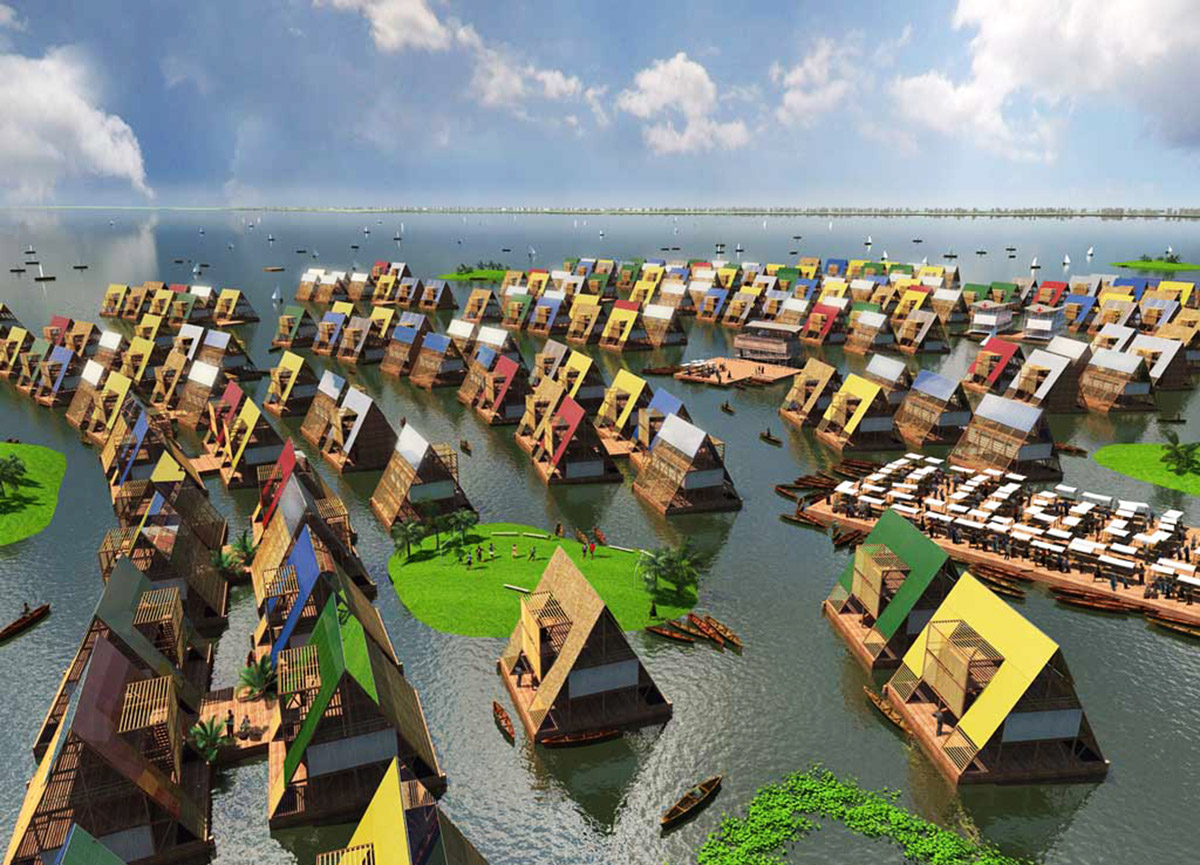
Makoko Floating School is a prototype structure that addresses physical and social needs in view of the growing challenges of climate change in an urbanizing African context. It is a movable 'building' or 'watercraft' currently located in the aquatic community of Makoko in the lagoon heart of Africa's second most populous city - Lagos, Nigeria. It is a floating structure that adapts to the tidal changes and varying water levels, making it invulnerable to flooding and storm surges. It is designed to use renewable energy, to recycle organic waste and to harvest rainwater.
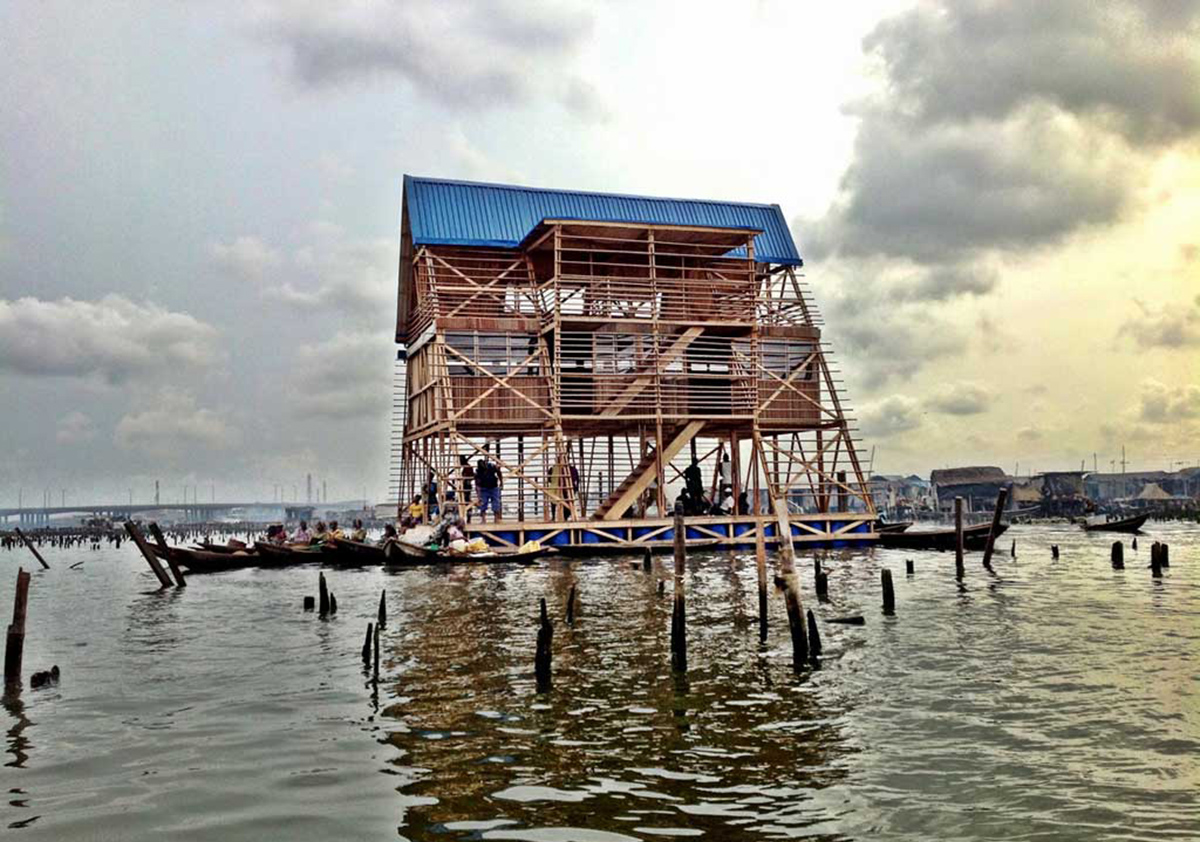
Makoko Floating School NLÉ Works Architects Kunlé Adeyemi 4
An estimated 100,000 people reside in Makoko in housing units built on stilts. Yet the community has no roads, no land and no formal infrastructure to support its day-to-day survival. In many ways, Makoko epitomizes the most critical challenges posed by urbanization and climate change in coastal Africa. At the same time, it also inspires possible solutions and alternatives to the invasive culture of land reclamation.
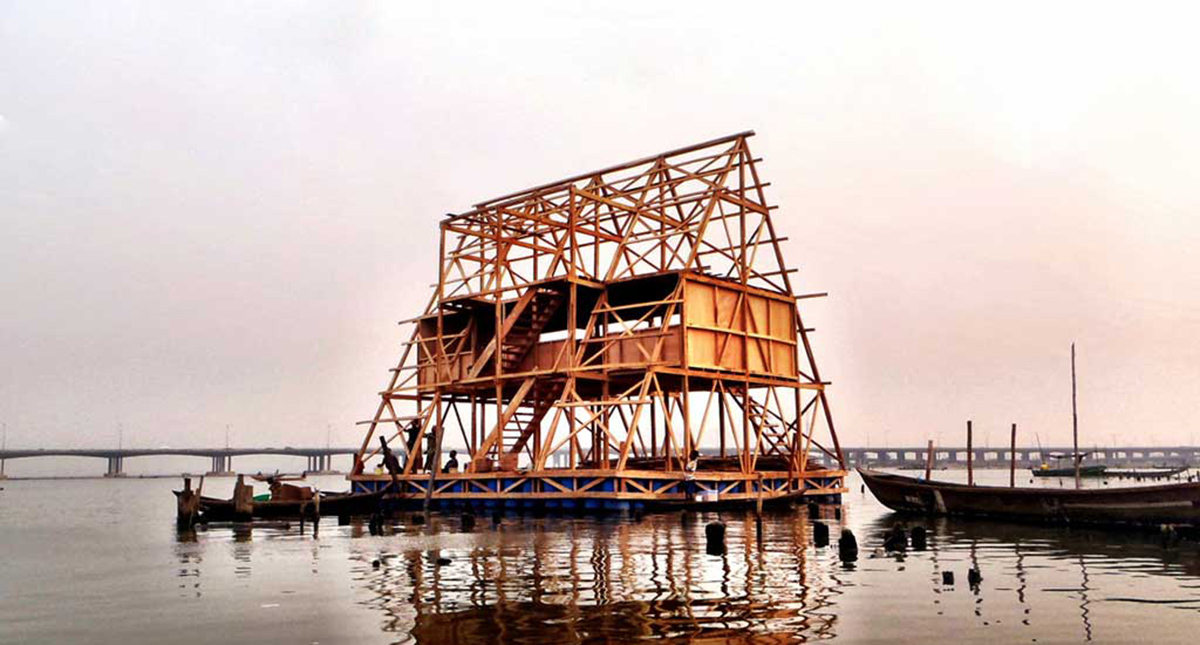
Makoko Floating School NLÉ Works Architects Kunlé Adeyemi 2
Until now Makoko has been served by one English speaking primary school, built on uneven reclaimed land, surrounded by constantly changing waters. Like many homes in Makoko, this has rendered the primary school building structurally precarious and susceptible to recurrent flooding. Sadly, the inability of the building to effectively withstand the impact of increased rainfall and flooding has frequently threatened local children’s access to their basic need – the opportunity of education.
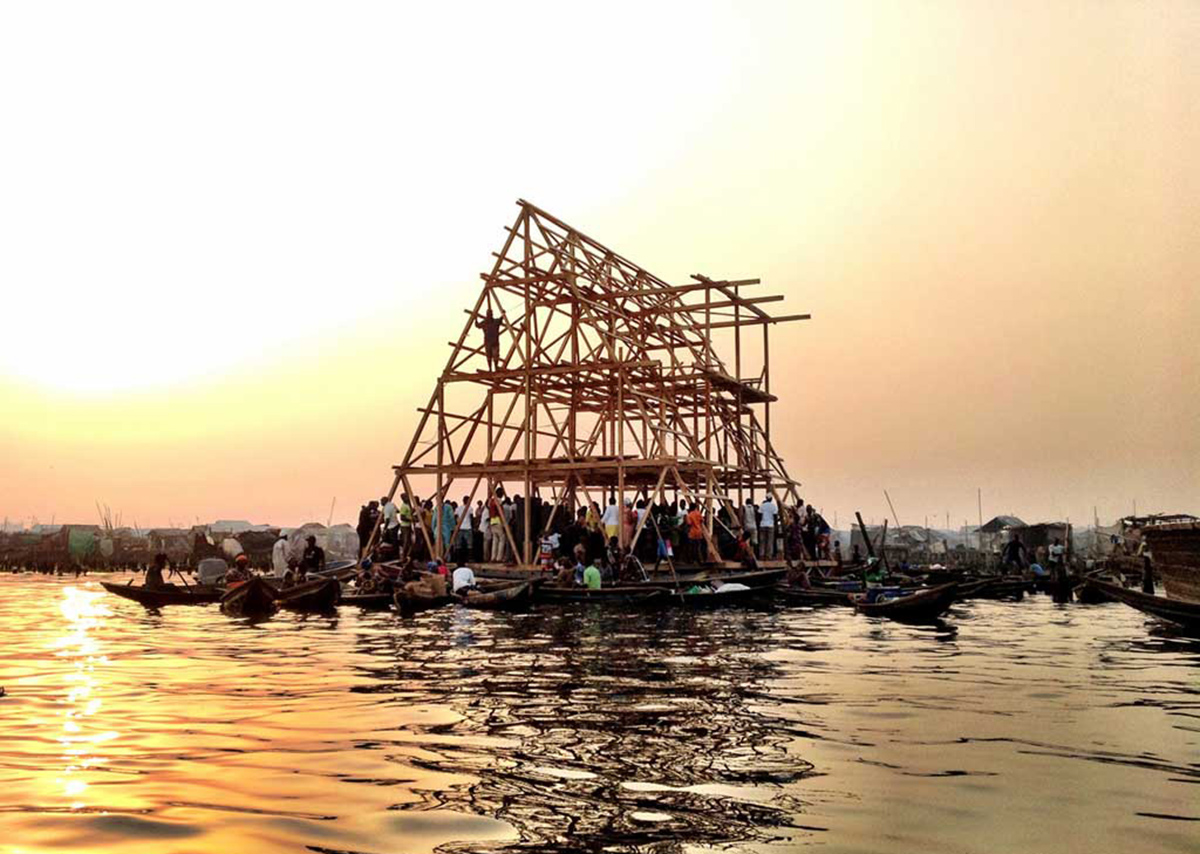
Makoko Floating School NLÉ Works Architects Kunlé Adeyemi 3
In response to this and in close collaboration with the Makoko community, NLÉ has developed a prototype floating structure that will serve primarily as a school, whilst being scalable and adaptable for other uses, such as a community hub, health clinic, market, entertainment center or housing. The prototype’s versatile structure is a safe and economical floating triangular frame that allows flexibility for customization and completion based on specific needs and capacities.
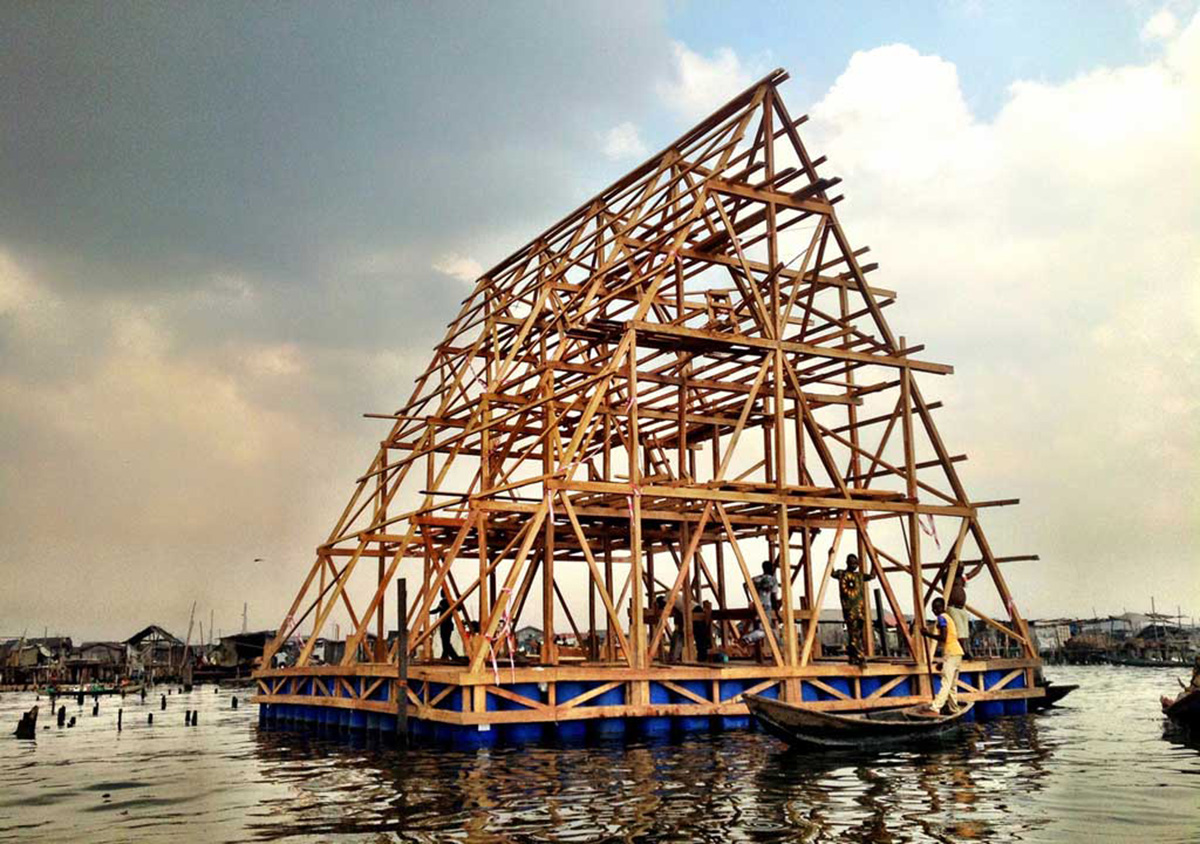
Makoko Floating School NLÉ Works Architects Kunlé Adeyemi 4
The 220m A-frame or pyramid building is 10m high with a 10m x 10m base. It is an ideal shape for a floating object on water due to its relatively low center of gravity, which provides stability and balance even in heavy winds. It also has a total capacity to safely support a hundred adults, even in extreme weather conditions.
The building has three levels. The 1st level is an open play area for school breaks and assembly, which also serves as a community space during after hours. The 2nd level is an enclosed space for two to four classrooms, providing enough space for sixty to a hundred pupils. A staircase on the side connects the open play area, the classrooms and a semi enclosed workshop space on the 3rd level.
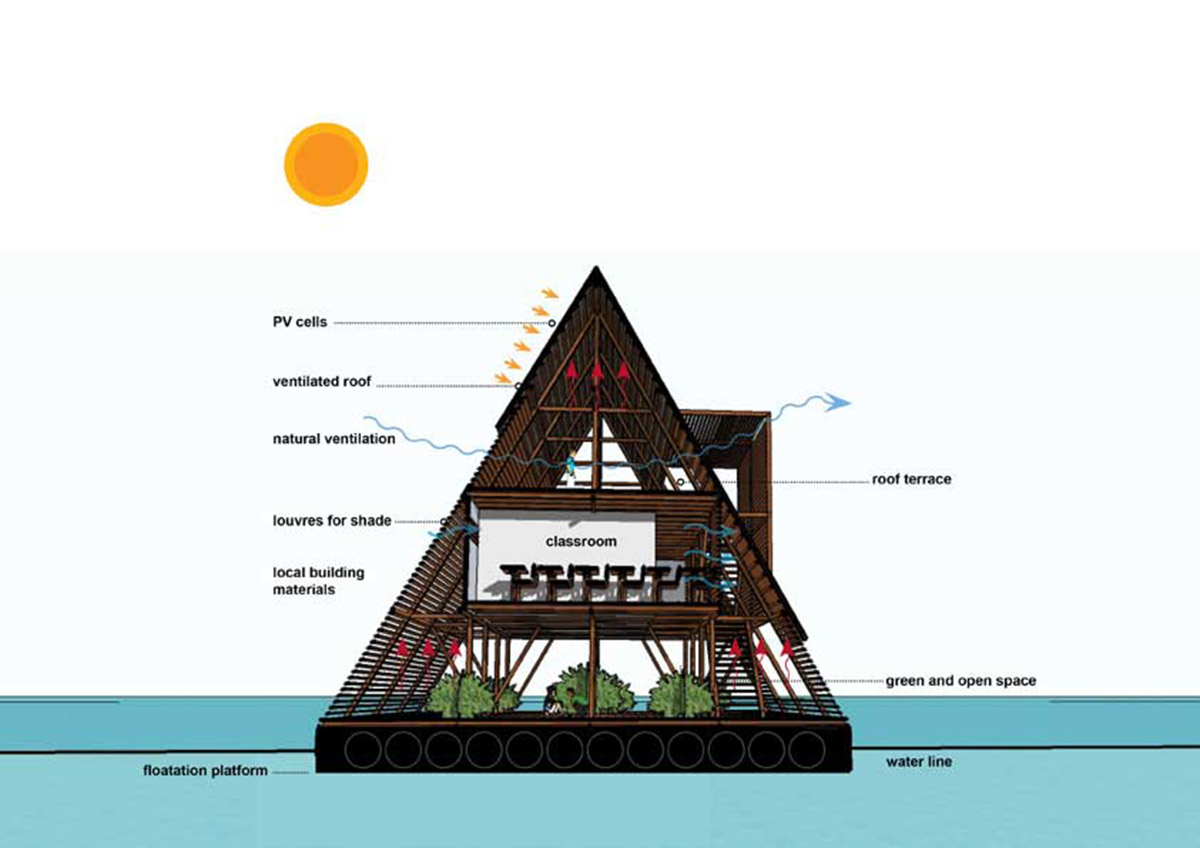
Makoko Floating School NLÉ Works Architects Kunlé Adeyemi -section diagram
The simple yet innovative structure adheres to ideal standards of sustainable development with its inclusive technologies for renewable energy, waste reduction, water and sewage treatment as well as the promotion of low-carbon transport. Furthermore a team of eight Makoko based builders constructed it using eco-friendly, locally sourced bamboo and wood procured from a local sawmill.
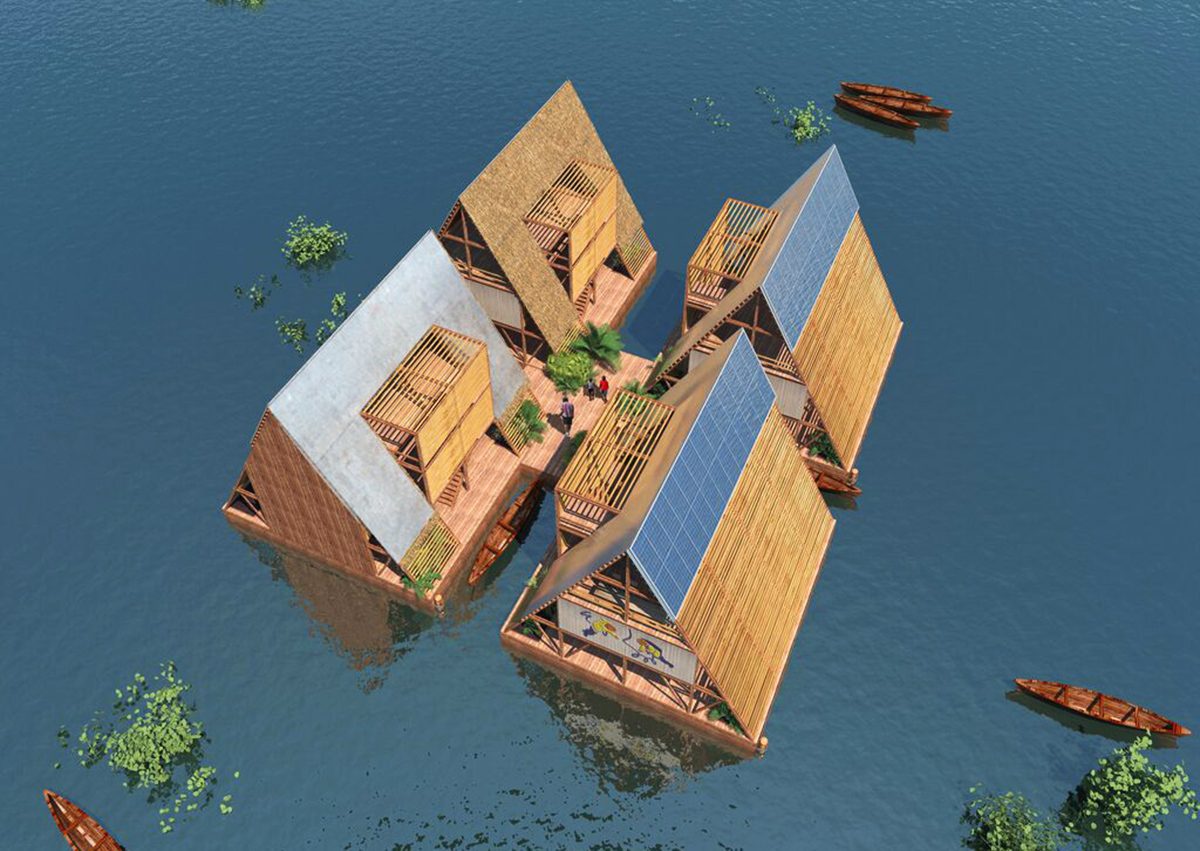
Makoko Floating School NLÉ Works Architects Kunlé Adeyemi -partial view
Construction began in September 2012 with floatation mock-ups and testing. Recycled empty plastic barrels found abundantly in Lagos were used for the building’s buoyancy system, which consists of 16 wooden modules, each containing 16 barrels. The modules were assembled on the water, creating the platform that provides buoyancy for the building and its users. Once this was assembled, construction of the A-frame followed and was completed by March 2013. Makoko Floating School is now in regular use by the community as a social, cultural and economic center and will soon welcome its first pupils for use as a primary school.
The project was initiated, designed and built by NLÉ in collaboration with the Makoko Waterfront Community, in Lagos State. The project was initially self-funded by NLÉ and later received research funds from Heinrich Boll Stiftung as well as funds for its construction from the UNDP/Federal Ministry of Environment Africa Adaptation Programme (AAP).
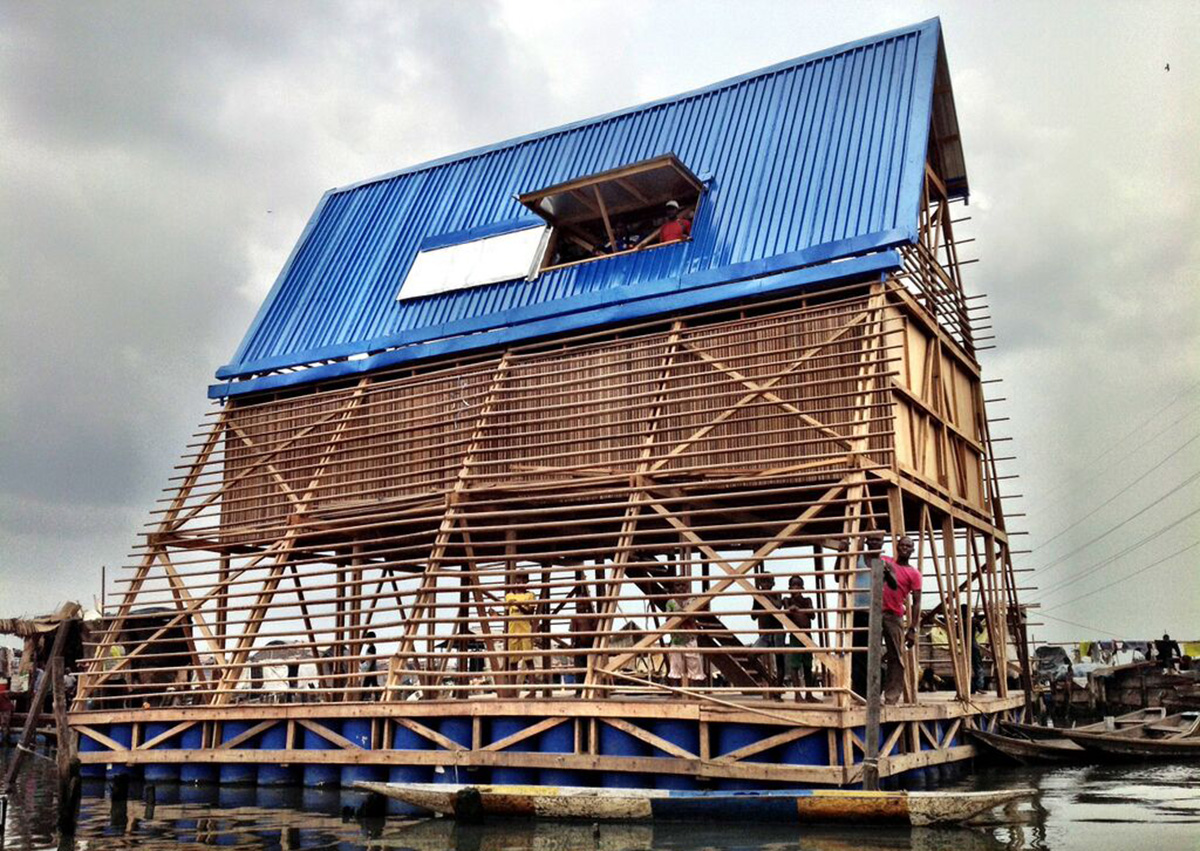
Makoko Floating School NLÉ Works Architects Kunlé Adeyemi -partial view
Project Facts
Program: School, Community Building
Area: 220 m2
Status: Under Construction
Support: United Nations Development Programme/Federal Ministry of Environment (AAP), Heinrich Böll Foundation, Tafeta & Partners
Team: Kunlé Adeyemi, Lisa Anderson, Thijs Bouman, Leslie Ebony, Marije Nederveen, Segun Omodele, Adekunle Olusola, Chryso Onisiforou, Martin Oreoluwa, Berend Strijland & Monica Velasco
Maoko Waterfront Community: The Baales of Makoko/Iwaya Waterfront Community, with special mention of Baale Emmanuel Shemede, Noah Jesutin Shemede, Jeunbete Shemede, Makoko Community Development Association & Youth Leaders and Makoko Floating School building team.
Collaborators: Blok Kats van Veen Architects, Dykstra – Naval Architects, Thieu Besselink, Roel Bosch, Urhahn + Borra, Pieters Bouwtechniek, Ikeyi & Arifayan, Solarmate Engineering Ltd., Renderings Tim van Bentum.
> via nleworks.com